
Time to the Hour and Half-Hour Formative Assessment - Just in Time Quick Check, Teacher Notes, and Supporting Resources
- Subject:
- Mathematics
- Material Type:
- Assessment
- Provider:
- VDOE
- Author:
- VDOE
- Date Added:
- 10/03/2024

Time to the Hour and Half-Hour Formative Assessment - Just in Time Quick Check, Teacher Notes, and Supporting Resources

Telling time to the hour and half-hour Mathematics Instructional Plan

Check the Time Mathematics Instructional Plan

Telling Time to the Nearest Minute - Mathematics Instructional Plan

Identifying equivalent periods of time -- Mathematics Instructional Plans (MIPs) help teachers align instruction with the 2016 Mathematics Standards of Learning (SOL) by providing examples of how the knowledge, skills and processes found in the SOL and curriculum framework can be presented to students in the classroom.

Determining elapsed time -- Mathematics Instructional Plans (MIPs) help teachers align instruction with the Mathematics Standards of Learning (SOL) by providing examples of how the knowledge, skills and processes found in the SOL and curriculum framework can be presented to students in the classroom.
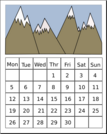
This learning tool was developed and designed to facilitate teacher/student and student/student discussion and recognition of significant events, holidays and celebrations within their lives, families and communities and those of their peers.

Telling time to the nearest minute -- Mathematics Instructional Plans (MIPs) help teachers align instruction with the Mathematics Standards of Learning (SOL) by providing examples of how the knowledge, skills and processes found in the SOL and curriculum framework can be presented to students in the classroom.
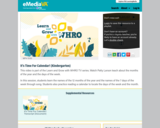
This video is part of the Learn and Grow with WHRO TV series. Watch Patty Larson teach about the months of the year and the days of the week.

Just in Time Quick Check Time to the Nearest Five Minutes
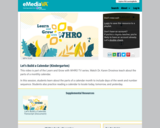
This video is part of the Learn and Grow with WHRO TV series. Watch Dr. Karen Drosinos teach about the parts of a monthly calendar.
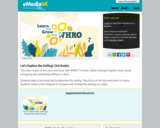
This video is part of the Learn and Grow with WHRO TV series. Watch Amanda Knighton teach about comparing and contrasting setting in a story.

K.9 Measurement: Time Co-Teaching MIP

NASA eClips Real World: Food Security -- Monitoring Crops from SpaceVideo Description: Discover how NASA's Earth-observing satellites gather data to monitor food growth. Dr. Inbal Becker-Reshef describes how mathematics is used to interpret satellite data and describe vegetation and crop yield. Dr. Hannah Kerner shares how algorithms and models use NASA data to describe and predict food supply and food shortages. This work through NASA Harvest provides tools for farmers and governments to describe and predict food security worldwide. Video Length: 5:25.NASA eClipsTM is a suite of online student-centered, standards-based resources that support instruction by increasing STEM literacy in formal and nonformal settings. These free digital and downloadable resources inform and engage students through NASA-inspired, real-world connections.NASA eClips Real World segments (grades 6-8) connect classroom mathematics to 21st Century careers and innovations. They are designed for students to develop an appreciation for mathematics through real-world problem solving.
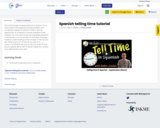
This tutorial helps students tell time in Spanish. It is a direct lesson that explicitly teaches phrases and vocabulary needed to tell time. There is also an opportunity for students to answer questions while viewing.
You may want to put some guiding questions on the board or on an exit slip, for example, to gauge students understanding of the concept.
1) How do you ask "What time is it?"
2) How do you say "It is ___ o'clock"?
3) What is one way to say 12 o'clock?
4) How do you specify AM vs. PM?
5) What makes the 1 o'clock hour different than the rest?

Students will learn to tell time to the hour, while having an opportunity to practice this skill independently.

3.9a Telling Time to the Nearest Minute Co-Teaching MIP

Determining elapsed time -- Mathematics Instructional Plans (MIPs) help teachers align instruction with the Mathematics Standards of Learning (SOL) by providing examples of how the knowledge, skills and processes found in the SOL and curriculum framework can be presented to students in the classroom.